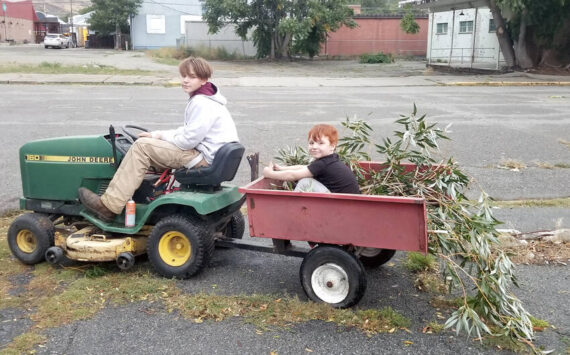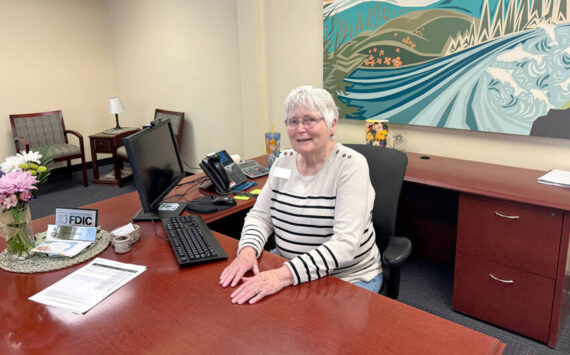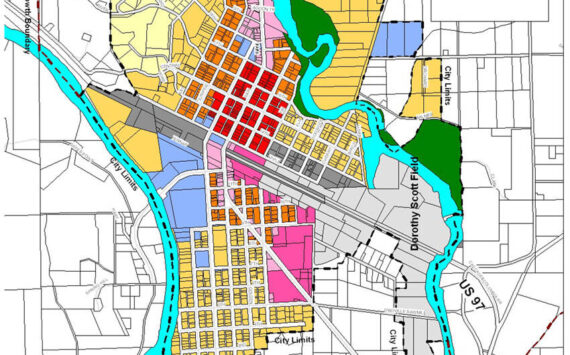Citizen bond committee reworked proposal, gains board approval
TONASKET – A year ago, Tonasket School District voters rejected a $6 million, 10-year bond that would have helped alleviate overcrowding, built a new Alternative/Outreach school and upgrade athletic facilities that in some cases pose safety hazards to participants.
The Tonasket School Board, on Monday, Nov. 24, approved a plan put forth by superintendent Paul Turner, who coordinated the work of a citizens’ facilities committee to rework the expansion/upgrade plan in a way that they hope will address the concerns voters had about the initial attempt. The second attempt actually will cost more: $6.98 million over 12 years, or $1.58 per $1,000 of property valuation.
After the failure of the intial bond vote, the board took a different tack in involving the community.
The facilities committee – which included Aaron Alberts, Dan Vassar, Ernie Cerillo, Gene Jones, Janet Bretz, John Verbeck, Kevin Terris, Michael Greene, Rob Inlow, Shane Freese, Stacey Kester and Carol Lanigan – met nearly weekly with Turner for the past several months to revamp the facilities plan; community Thoughtstream surveys have given the board and committee data to work with on the community’s priorities; and a citizens’ bond committee chaired by Greene, Patti Hill and Kirsten Williams will take on much of the task of providing information to voters leading up to the Feb. 10, 2015 election.
“We used three main premises during our discussion,” Turner said. “One was ‘need vs. want.’ Cost was the second; and student programming. If we diverged, we tried to come back to those ideas to bring ourselves back and stay on focus on where we were at.”
While there were some complaints in the community that the Thoughtstream survey was somewhat convoluted, the 500-plus responses did glean trends of opinions about the features of the bond that were incorporated into the committee’s planning.
During the board meeting, Lea Schreck of Thoughstream summarized the results via teleconference.
“Overall what we saw in the data was that the Alternative School students needed a separate identity (location), but there needed to be cost-effective ways to get that,” she said. “For many constituents, Elementary School overcrowding was a key concern … there were cost concerns around the type of Ag shop construction … there was positive feedback for Career Programming … And there was positive feedback for the sports complex and gym space.”
The project would affect nearly the entire campus, divided into six sections: sports complex upgrades, Elementary School expansion; new space for the Alternative/Outreach school; Agricultural Shop expansion; Middle School expansion (that would also free up some High School space); and campus wide safety and security upgrades.
“We had citizens on the committee, and the architect was here and met with the committee,” Greene said as part of his bond committee presentation. “We did community surveys, and the superintendent went out to speak with community groups. There was a lot of information gathered that led to the bond at the number that it did and the improvements that are being made. It adds value to every area of the facility … it touches all areas of the school.
“There are a lot of cost savings, even if some of the numbers seem high … To put some of this into perspective, the last bond you did was 20 years ago. Clinton was the president and a new car cost $12,000. That’s how long it’s been and a lot has changed since then.”
Turner detailed what the improvements would involve:
- Sports facilities upgrades would include an ADA-accessible path from the Elementary School all the way to Havillah Road; resurfacing the track (if not done in the next couple of years, it risks structural damage to the underlying track foundation); upgrading the baseball and softball fields (including the playing surfaces, as well as fencing to prevent injury to spectators); and restrooms/concessions (likely combined with the Elementary School expansion.
- Elementary expansion would take place to the northwest of the building, extending into the current playground area. A new pod would create space for the preschool, Life Skills classroom, Resource rooms and specialists. Most of those currently taking up classroom space ( and in some cases, hallway space) in the existing pods, which would then revert to regular classroom use.
- The expansion also would include dual-use bathrooms that would be accessible only from the inside or outside of the building, depending on whether for students during school hours or for those attending athletic events outside.
- “Overall we end up with eight classrooms per pod,” Turner said. “Four classrooms per grade, which was our goal coming in, as well as accommodating other programs.”
- Ag shop expansion will include three bays. One of the bays will include three labs, including one “wet” lab.
“Also some refrigerator and freezer units, as well as the mech lab,” Turner said. “Right now when they do a project on small engines, they have no place to put them. Over top would be a storage area, and with a steel roof we could run a hoist out over there. It also includes a covered sidewalk outdoors, and a sidewalk to the parking lot.”
- Middle School expansion will have a domino effect on nearly every other portion of the project. With the expansion of the Ag shop, the new Ag classroom and teacher will be relocated into the high school proper creating more classroom space in the Middle School. Four additional classrooms will be constructed, which will also help alleviate space issues in the High School.
Additionally, the Middle School gym will be expanded to the west. Currently, the gym is so small that bleachers cannot be fully opened for athletic events; this will allow the gym to be used to its full capacity as well as creating much of the framework for the Alternative/Outreach school project.
- The Alternative / Outreach portion of the project had created much of the controversy surrounding the initial bond. Some wanted the school to continue in a facility completely detached from the primary campus, while others wanted to save money by incorporating it into a the current building.
“We sat down with the Alternative and Outreach staff ,” Turner said. “This is the last scenario we put together …
“The access to this would be daylight space on a lower level (below the Middle School gym) only with a parapet or stanchion over the top and a patio area out front. There would be five offices for working one on one or two on one work. The Outreach would have two classes with an accordion door in between. Alternative School wanted a solid wall, with two classrooms and bathroom.”
Turner added that the design would prevent the school from having the feel of being in a basement, maximizing the use of natural light. The current building is 3,500 square feet, he said, while the new addition would be 5,022 feet.
There were some concerns about whether or not a recent referendum that was passed could render some of the plans outdated before the project even begun, but Turner noted that changes that might affect classroom space (a) could take time to come to fruition and (b) if they happen, would require additional state funding to come through.
“What the Legislature does, we can banter all day long about,” he said. “But we need to move forward.”




